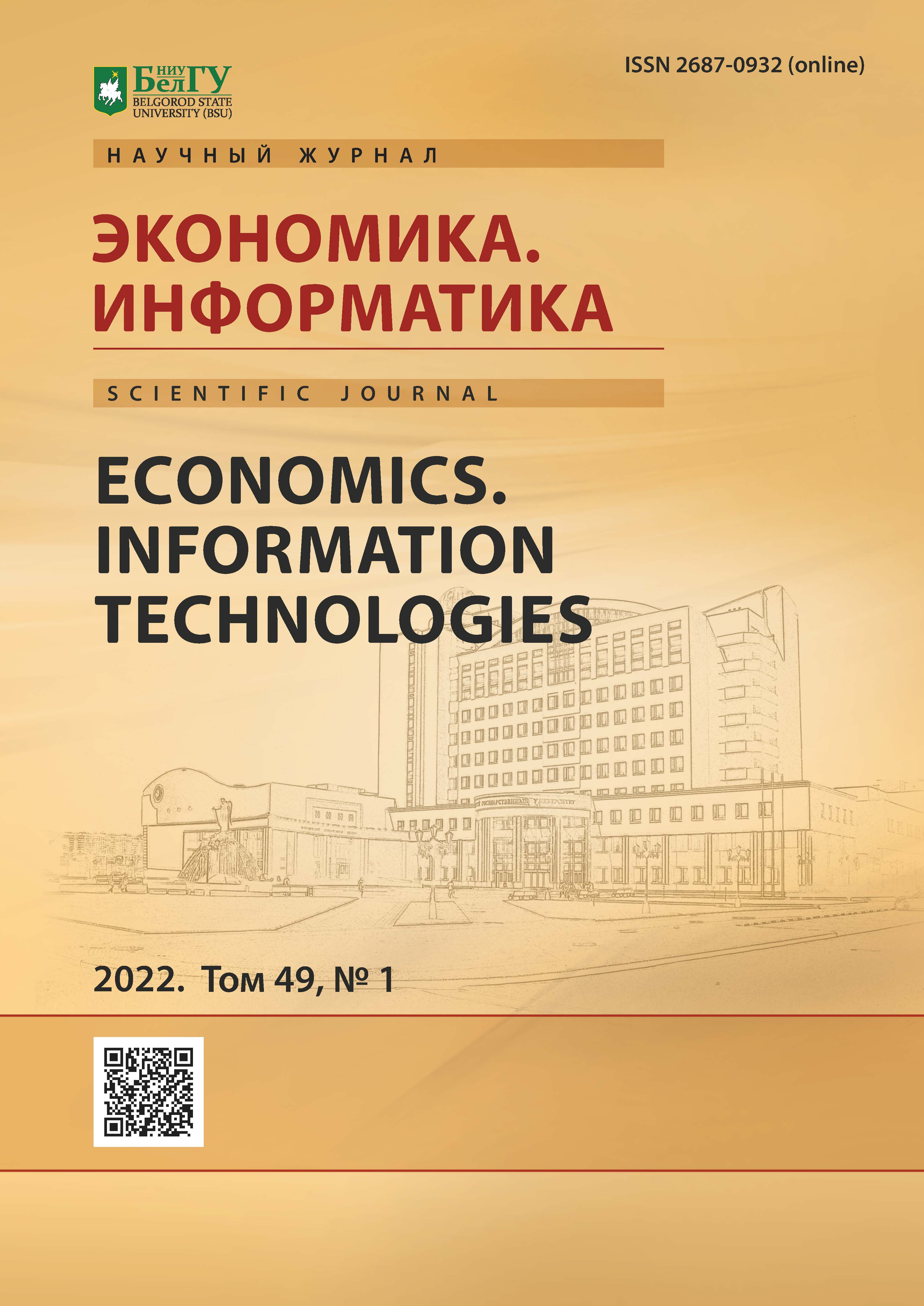Factors of development of competitiveness of Russian macro-regions
DOI:
https://doi.org/10.52575/2687-0932-2022-49-1-5-16Keywords:
economy, region, macroregion, competition, competitivenessAbstract
This article presents a retrospective analysis of territorial competition and competitiveness in the scientific and economic literature and in the regulatory framework of the Russian Federation. In addition, the competitive environment of the macroregion is considered, in which the objects of competition in a certain territory are directly represented, including investments, labor resources, speed in innovation, growing product diversity, preferences (tax and customs privileges), state support for the creation of infrastructure. As part of the competitiveness study, an analysis of scientific papers was carried out, after which the author's definitions of the competitiveness of the region and the macroregion were proposed. After the analysis, the author's definitions of regional competition, macroregion competition, regional competitiveness and macroregion competitiveness are presented. Within the framework of the results and their discussion, a statistical analysis of the factors of the formation of the competitiveness of macroregions was carried out.
Acknowledgements: the research was carried out within the framework of the state assignment FZWG-2020-0016 (0624-2020-0016), the topic of the project "Fundamental foundations of global territorial and industry specialization in the context of digitalization and technology convergence".
Downloads
References
О защите конкуренции: федер. закон от 26.07.2006 г. № 135-ФЗ (ред. от 22.12.2020). URL: http://www.consultant.ru/document/cons_doc_LAW_61763/ (дата обращения: 22 декабря 2021).
Васильева А.В. 2020. Конкурентоспособность как отражение эффективности социально-экономического развития региона (на примере Амурской области). В кн.: Актуальные проблемы и перспективы развития государственной статистики в современных условиях. Саратов, Саратовский социально-экономический институт (филиал) федерального государственного бюджетного образовательного учреждения высшего образования «Российский экономический университет им. Г.В. Плеханова»: 17–20.
Горбунова Е.И. 2021. Формирование межрегиональных кластеров на основе отраслевой специализации территорий. Региональная экономика: теория и практика, 19 (12): 2308–2324.
Данилова Т.А. 2021. Конкуренция как важнейший показатель устойчивого развития региона. В кн.: Формирование экономической устойчивости региональных социально-экономических систем. Владимир, Атлас: 52–56.
Катов В.В. 2019. Роль государственного регулирования в развитии конкурентной среды в регионе. Ученые записки, 3(31): 59–65.
Коробов Ю.И. 2019. Конкуренция на финансовых рынках в условиях цифровизации экономики. Экономическая безопасность и качество, 3 (36): 11–13.
Матвеев В.В. 2021. Устойчивость региональной экономики и структурные сдвиги: теория и практика. Вестник Удмуртского университета. Серия Экономика и право, 31 (6): 970–975.
Показаньева Т.В. 2021. Развитие конкуренции в регионах РФ. В кн.: Приоритетные направления регионального развития. Курган, Курганская государственная сельскохозяйственная академия им. Т.С. Мальцева: 234–238.
Селезнев А.З. 2018. Сущность конкурентоспособности национальной экономики и ее индикаторы.
В кн.: Актуальные проблемы экономики, учета, аудита и анализа в современных условиях.
М., Научный консультант: 383–391
Сергеева К.И., Киселёва Д.А. 2021. Конкурентоспособность: сущность, методы оценки на различных уровнях управления. В кн.: Наука, образование и бизнес в современных условиях. Санкт-Петербург, Санкт-Петербургский государственный экономический университет: 69-72.
Юданов А.Ю. 2019. Теория конкуренции: прикладные аспекты. Мировая экономика и международные отношения, 6: 41.
Ansell C., Gash A. 2018. Collaborative platforms as a governance strategy. Journal of Public Administration Research and Theory, 28 (1): 16–32.
Granberg A.G. 2017. State responsibility for national security and economic development under the economic sanctions. Бизнес, менеджмент и право, 1: 140.
Leydesdorff L., Zawdie G. 2010. The triple helix perspective of innovation systems. Technology Analysis & Strategic Management, 22 (7): 789–804.
Lyshchikova J.V., Stryabkova E.A., Glotova A.S., Dobrodomova T.N. 2019. The «smart region» concept: the implementation of digital technology. Journal of Advanced Research in Law and Economics,
(4): 1338–1345.
Nagirnyak A.S. 2020. Competition of regions for forest development. В кн.: Формирование конкурентной среды, конкурентоспособность и стратегическое управление предприятиями, организациями и регионами. Пенза, Пензенский государственный аграрный университет: 123–126.
Nakwa K., Zawdie G. 2016. The ‘third mission’and ‘triple helix mission’of universities as evolutionary processes in the development of the network of knowledge production: Reflections on SME experiences in Thailand. Science and Public Policy, 43 (5): 622–629.
Porter M.E. 1990. The competitive advantage of nations. Harvard business review, 68 (2): 73–93.
Sari Y., Azmukhanova А. 2020. The competition of major powers for the caspian energy resources, Bulletin of the L.N. Gumilyov Eurasian National University. Historical sciences. Philosophy. Religion Series, 2 (131): 56–67.
Tretyakova L.A., Vladika M.V., Tselyutina T.V., Vlasova T.A., Timokhina O.A. 2020. Profitable production as a socio-economic based on supply chain management with lean production. International Journal of Supply Chain Management, 9 (4): 1174–1181.
Vaganova O.V., Solovjeva N.E., Tamov R.M. 2021. Managing the russian agro-industrial complex during the pandemic in the context of digitalization. Webology, 18: 857–870.
Vladyka M. V., Doroshenko Yu. A., Rudychev A. A., Goncharenko T. V. 2020. Improving the competitiveness of construction industry enterprises in regional housing markets. Financial Economics, 11: 29–33.
Abstract views: 571
Share
Published
How to Cite
Issue
Section
Copyright (c) 2022 ECONOMICS. INFORMATION TECHNOLOGIES

This work is licensed under a Creative Commons Attribution 4.0 International License.


